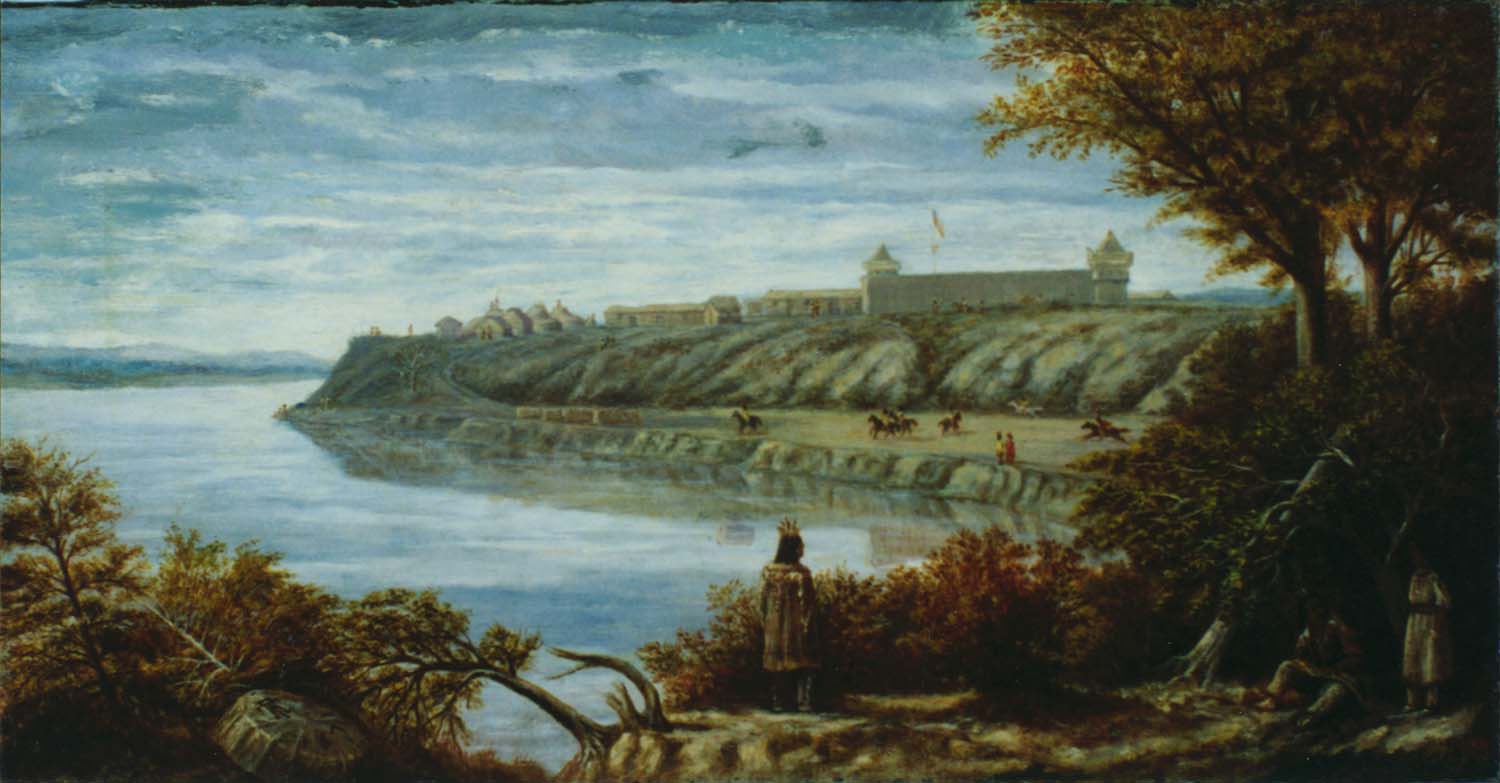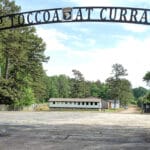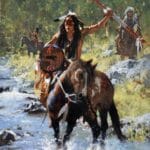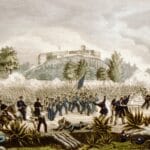The Fort Berthold Reservation, nestled in the heart of North Dakota, tells a compelling story of resilience, cultural richness, and the ongoing journey of the Mandan, Hidatsa, and Arikara Nation (MHA Nation). This land has been their ancestral home for generations, a place where their forebears hunted, farmed, and forged strong communities. This article delves into the history, heritage, and contemporary realities of this vibrant and complex community.
A Rich Legacy
The reservation officially came into being in 1870, following the Treaty of Fort Laramie (1851), which acknowledged—though significantly reduced—the ancestral territories of these three affiliated tribes. However, their history stretches back much further, interwoven with the very fabric of this landscape. The MHA Nation’s culture is a vibrant tapestry of unique traditions, languages, and art forms, diligently preserved and passed down through generations. Their unwavering dedication to self-determination shapes their present and future, allowing them to chart their own course while honoring their distinct identity.
Economic Landscape
The Fort Berthold Reservation, like many rural areas, faces economic challenges. Unemployment remains a concern, but the MHA Nation is proactively pursuing diverse economic opportunities. The 4 Bears Casino and Lodge, a successful tribal enterprise, exemplifies this spirit, providing jobs and generating revenue for the community. This venture demonstrates their entrepreneurial drive and commitment to building a sustainable future. Ongoing research explores the impact of such enterprises on reservation economies and the delicate balance between economic development and cultural preservation.
Modern Crossroads: Challenges and Opportunities
The reservation grapples with complex issues common to many rural communities, including poverty, access to quality healthcare, and environmental concerns, particularly those related to the complexities of oil and gas development on their land. This necessitates a careful balancing act—the need for economic growth alongside the crucial importance of environmental protection and cultural preservation. The MHA Nation actively seeks solutions that respect both their heritage and their future. Scholars suggest that sustainable development models, incorporating traditional ecological knowledge, may offer promising pathways forward.
Cultural Preservation: A Living Heritage
Preserving cultural heritage is not merely a priority for the MHA Nation; it’s a way of life. Language revitalization programs ensure that the voices of their ancestors continue to resonate. Workshops focused on traditional arts and crafts keep ancient skills alive, while community events provide platforms for sharing stories, dances, and ceremonies. These efforts ensure that the rich tapestry of MHA culture continues to flourish, connecting younger generations to their roots.
Looking Ahead: Shaping the Future
The future of the Fort Berthold Reservation is a story still unfolding. The MHA Nation navigates a complex landscape, balancing economic opportunities with the profound desire to protect their land, preserve their culture, and exercise their sovereignty. They are the architects of their own destiny, working to create a thriving community where their traditions are honored and their people can prosper. Their journey stands as a testament to the enduring resilience of the human spirit.
Exploring North Dakota’s Indian Reservations: A Visitor’s Guide
North Dakota offers a unique opportunity to experience authentic Native American culture by visiting its seven distinct reservations. Each reservation is a sovereign nation, akin to a small country within a larger one, with its own government, laws, and customs. This guide provides valuable information for those interested in respectfully exploring these vibrant communities.
Visiting Reservations: Access and Etiquette
Visiting North Dakota’s Indian reservations is not only permitted but often encouraged. Many communities welcome visitors and view tourism as a means of sharing their rich heritage, supporting local economies, and preserving their traditions. However, pre-trip research is essential to understand each reservation’s specific customs and regulations.
Before you go, it’s recommended to contact the respective tribal tourism office. They can provide the most up-to-date information on accessibility, upcoming events, and any specific guidelines or restrictions. Learn more about eugene talmadge, a prominent figure in Georgia politics, to understand the importance of respecting local governance and cultural nuances.
Fort Berthold: A Cultural Immersion
The Fort Berthold Reservation, North Dakota’s largest, is home to the Mandan, Hidatsa, and Arikara Nation (Three Affiliated Tribes). One of its most compelling attractions is the Earthlodge Village, a reconstructed traditional village offering a glimpse into the architectural ingenuity and cultural practices of the Three Affiliated Tribes. Guided tours and cultural demonstrations provide a deeper understanding of their history and way of life.
Beyond Fort Berthold: Discovering Other Reservations
Each of North Dakota’s seven reservations offers unique experiences:
- Spirit Lake Reservation (Sisseton Wahpeton Oyate): Known for vibrant powwows and cultural events.
- Standing Rock Reservation (Lakota Sioux): A place of deep spiritual significance.
- Turtle Mountain Reservation (Chippewa and Cree): Features breathtaking scenery and a dedicated cultural center.
- Lake Traverse Reservation (Sisseton Wahpeton Oyate): Shared with South Dakota.
- Devils Lake Reservation (Spirit Lake Tribe): A place where history and present day intertwine.
- Sisseton-Wahpeton Oyate of the Lake Traverse Reservation: A unique tribal government residing in both North and South Dakota.
- Fort Berthold Reservation (MHA Nation): As previously discussed, rich in history and culture.
Respectful Travel: Cultural Sensitivity
Just as when visiting a foreign country, respecting local customs is crucial. Ask permission before photographing people or sacred sites, dress modestly, be mindful of noise levels, especially in spiritually significant areas, and refrain from removing artifacts. Each tribe may have specific guidelines, so always inquire beforehand.
Tourism can significantly benefit reservation economies by creating jobs, generating revenue, and supporting cultural preservation. However, responsible and respectful tourism that benefits communities while preserving their traditions and values is paramount.
Is New Town, North Dakota on a Reservation?
Yes, New Town is located within the boundaries of the Fort Berthold Indian Reservation. It’s the largest city on the reservation and serves as the center of tribal government for the Mandan, Hidatsa, and Arikara Nation (Three Affiliated Tribes).
New Town and Fort Berthold: A Deeper Look
New Town’s location on the Fort Berthold Reservation signifies more than just geography; it represents a complex relationship between the town and the reservation’s history and governance. The reservation, established in 1870, represents the ancestral homeland of the Three Affiliated Tribes, a vital link to their heritage and cultural identity.
The Three Affiliated Tribes: Governing Fort Berthold
The Three Affiliated Tribes exercise sovereignty over Fort Berthold, making decisions about their own affairs with their own laws, police force, and court system. New Town plays a vital role as the administrative center of this self-governance, reflecting the tribes’ self-determination.
Living on the Reservation: Community and Challenges
Living on a reservation can foster a strong sense of community and connection to one’s heritage. However, like any community, reservations face challenges such as economic disparities and access to resources. Ongoing research explores these issues and their impact on residents of reservations like Fort Berthold.
Fort Berthold: History, Nature, and Modernity
Fort Berthold blends history, natural beauty, and modern attractions. Visitors can explore the Earthlodge Village, learn about traditional lifeways at the cultural center, try their luck at the 4 Bears Casino and Lodge, or enjoy the scenery of Lake Sakakawea. Scholars are studying the impacts of these attractions, examining both the economic benefits and potential challenges to cultural preservation.
North Dakota’s Indian Reservations: A Guide to History, Culture, and Current Communities
North Dakota is home to five federally recognized Indian reservations: vibrant sovereign nations, each with unique stories, traditions, and contemporary experiences. These self-governing communities within North Dakota maintain their own governments, laws, police, and services, balancing cultural heritage preservation with the complexities of the 21st century.
Five Distinct Nations
- Fort Berthold Reservation (Mandan, Hidatsa, and Arikara Nation – Three Affiliated Tribes): Located along the Missouri River, this reservation faces the challenges and opportunities of balancing cultural richness with economic advancement. New Town serves as the tribal headquarters.
- Standing Rock Reservation (Lakota and Dakota people): With its rolling hills and sacred buttes, this reservation holds profound historical and spiritual significance. Recent events, like the Dakota Access Pipeline protests, have highlighted important issues of indigenous rights and environmental protection.
- Spirit Lake Reservation (Spirit Lake Nation): Characterized by its tranquil natural beauty, the Spirit Lake Nation maintains a deep connection to their land and strives to revitalize language and cultural traditions while addressing social and economic needs.
- Turtle Mountain Reservation (Turtle Mountain Band of Chippewa Indians – Ojibwe): Its beautiful landscapes provide a backdrop for the Ojibwe’s rich culture that values storytelling, traditional arts, and respect for the land. The tribe actively preserves its language and heritage while navigating economic challenges.
- Sisseton-Wahpeton Oyate of the Lake Traverse Reservation (Dakota people): Located in the northeastern corner of North Dakota, the Sisseton-Wahpeton Oyate blend traditional practices with modern endeavors, demonstrating adaptability and a commitment to building a strong future for their community.
These five reservations are more than designated areas; they are living communities integral to North Dakota’s cultural tapestry, showcasing the enduring strength and resilience of Native American cultures. Continuous research and engagement with tribal communities is crucial for accurate and respectful understanding. Remember to contact each reservation’s tribal tourism office for the most up-to-date information regarding visiting.
- Unlock Water’s Symbolism: A Cross-Cultural Exploration - April 20, 2025
- Identify Black and White Snakes: Venomous or Harmless? - April 20, 2025
- Unlocking Potential: Origins High School’s NYC Story - April 20, 2025















